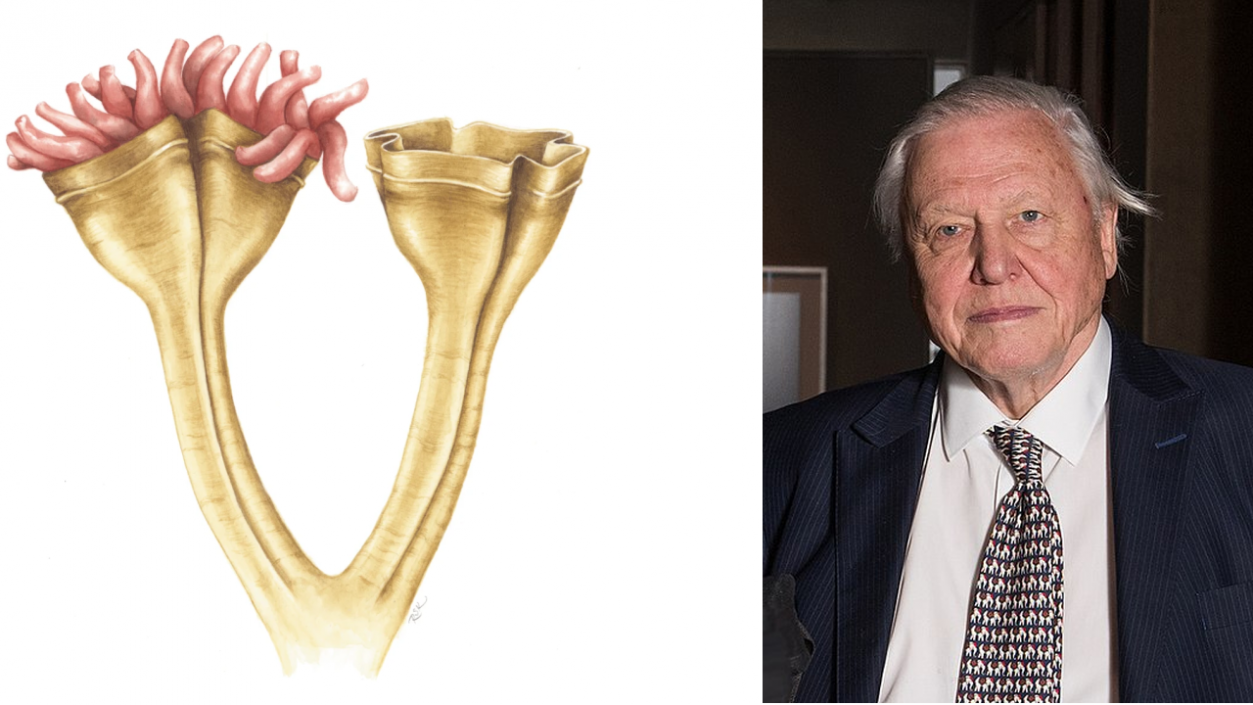The Nature’s environment and development A specialized magazine published a report on the very ancient nettle, which was named in honor of the British naturalist and publicist Sir David Attenborough Auroralumina attenboroughii They were named. Nettles include corals, sea anemones, and jellyfish – the types of animals just described were one of their ancestors.
This is also reflected in the name of the ancient torch-like animal that appeared at the dawn of nettle evolution: twilight = dawn, lumina = light; The name of the species is derived from Attenborough. To date, there are about 50 organisms (living and fossilized today) named after the popular breeder. Attenborough spent his childhood near Charnwood, the place where the discovery was made, which is why researchers thought it was a good idea to name the ancient animal after him.
The fossil and its diagram.
Source: nature
The Auroralumina attenboroughii A teacup-like creature with a handle, it lived 556-562 million years ago, and thus may be the oldest animal that still has surviving relatives. Building on the classic idea, the living world today was established during a period of tremendous increase in biodiversity, called the Cambrian explosion, approx. 539 million years ago, the anatomical features that can be seen on today’s animals can be clearly identified in the fossils. However, it seems that even before that, an animal with fixed traits was able to evolve.
The animal itself was about 20 cm high, and its arms were in 6-centimeter cups sitting at the end of forked handles, 12 cm; In its surroundings you can see the remains of a small carpet from which an animal can grow. Since the animal’s handle cup and its arms in the cup were preserved in different ways, the researchers believe that these were also tissues of different hardness. The body of the animal is characterized by fourfold symmetry, similar to the modern jellyfish.
The find is about 20 million years older than the oldest known predator, so it has taken center stage.












































